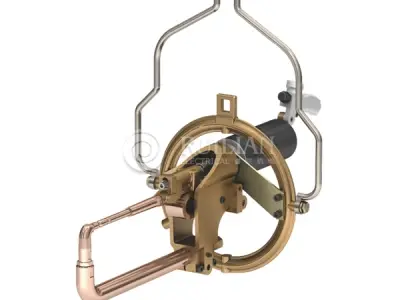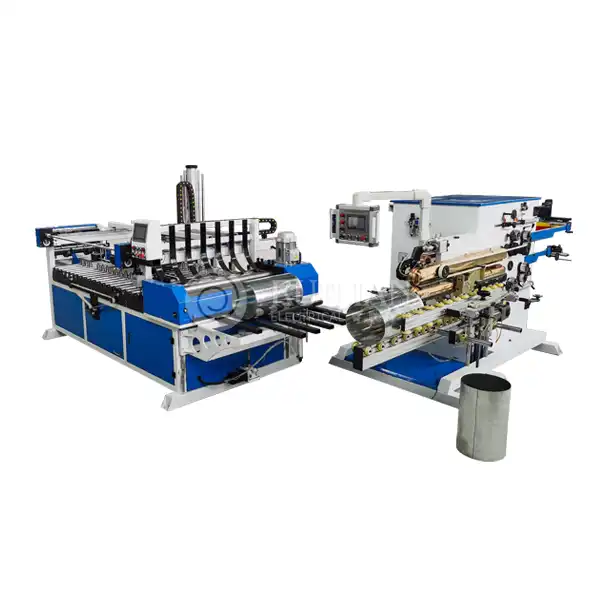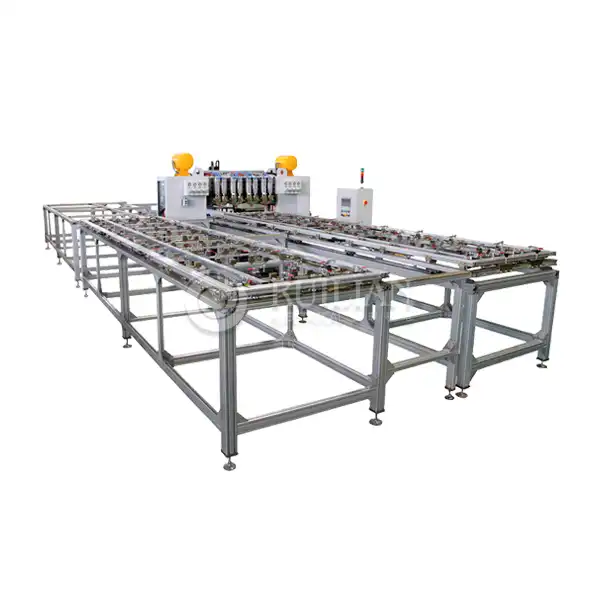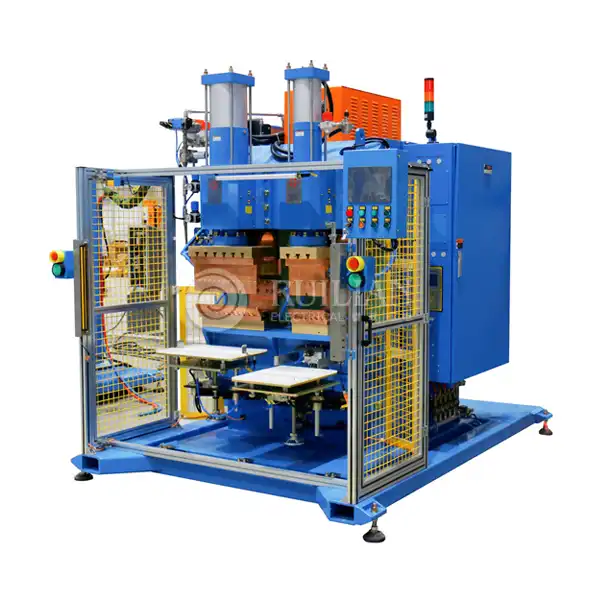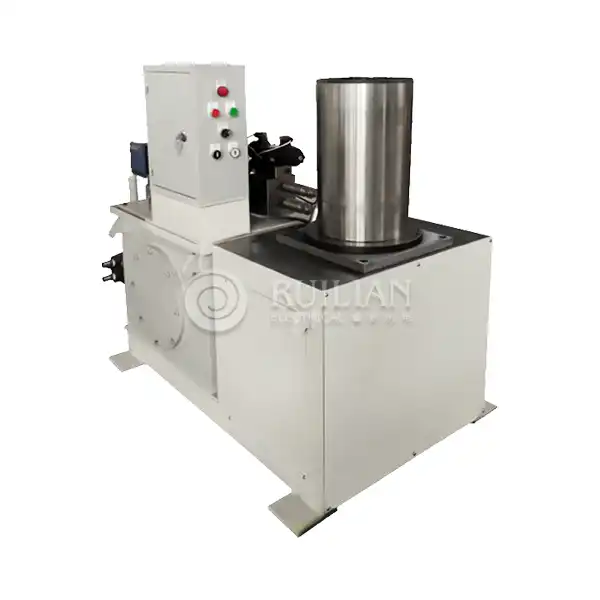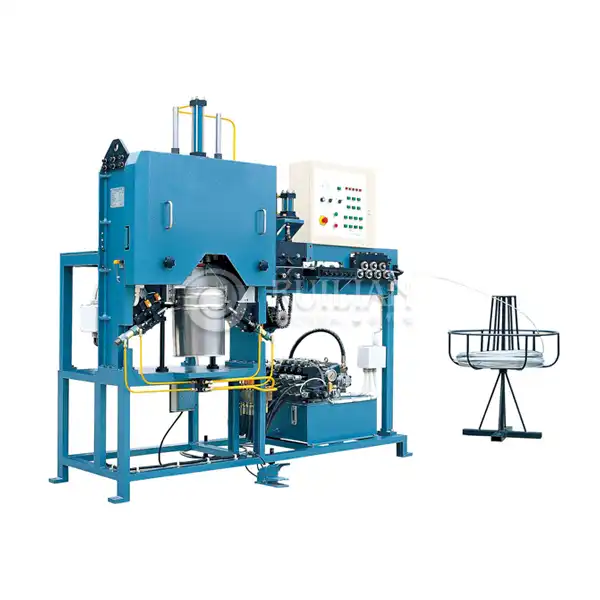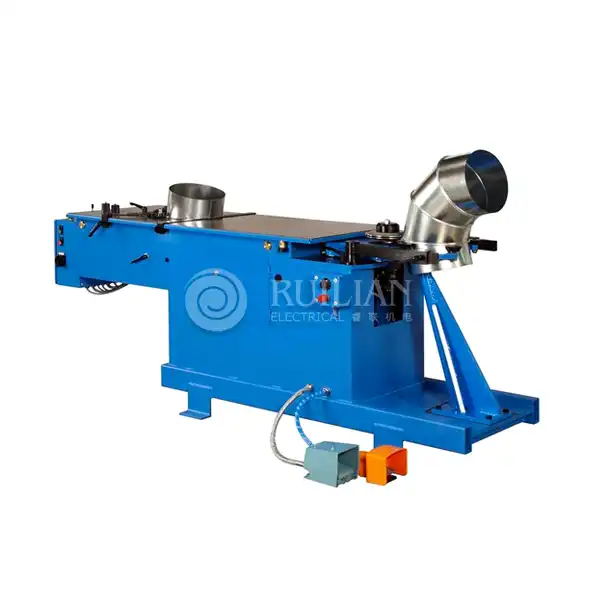Understanding Your Welding Machine
Before attempting to jump-start any welding machine, it's crucial to familiarize yourself with its components and operation. Welding machines come in various types, including MIG, TIG, and stick welders. The Resistance Arc Seam Welding Machine, in particular, is a specialized piece of equipment used for continuous welding of sheet metal and thin-walled pipes.
This type of machine combines resistance welding principles with arc welding techniques, allowing for high-speed, high-quality welds on materials that are difficult to join using traditional methods. Understanding the intricacies of your specific machine will help you troubleshoot more effectively and safely.
Key components to be aware of include:
1. Power source
2. Electrode holder
3. Ground clamp
4. Control panel
5. Cooling system (if applicable)
Familiarize yourself with the location and function of these components, as they'll be crucial in the jump-starting process.
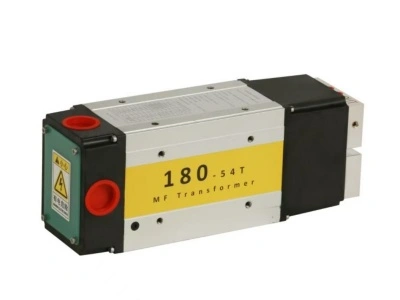
Diagnosing the Problem
Before attempting to jump-start your welding machine, it is crucial to thoroughly diagnose the root cause of the starting issue. Identifying the specific problem can save time and prevent further damage to the equipment. There are several common issues that might prevent a welding machine from starting, each requiring different troubleshooting approaches.
One of the most frequent problems is a dead battery, particularly for portable units. If the battery is drained, the machine will not have the power necessary to start. It's important to check the battery's charge level and connections to ensure they are secure. Another common issue is a faulty power connection. Inspect the power cord and any connectors to make sure they are not damaged or loose, as these can interrupt the flow of electricity to the machine.
A tripped circuit breaker is another potential culprit. This can occur if the machine is overloaded or if there’s a short circuit. Resetting the circuit breaker may resolve the issue. Additionally, damaged power cables can lead to starting problems; any frays or cuts in the cables can result in a loss of power. A thorough inspection of the cables is essential to identify any such issues.
For more specialized equipment, such as a China welding machine, there are additional factors to consider. Issues like misaligned electrodes can prevent proper operation, as they are critical for achieving the desired weld quality. Clogged coolant lines can also hinder performance, leading to overheating and potential failure to start. Moreover, worn seam rollers may not provide the necessary support for the welding process, further complicating startup.
Conducting a visual inspection of the machine is a vital first step in troubleshooting. Look for any obvious signs of damage or wear, particularly around power cables, connectors, and the control panel. For portable welding machines, double-check that the battery is fully charged and securely connected.
In the case of Resistance Arc Seam Welding Machines, pay close attention to the electrode wheels and seam rollers. Ensure they are free from obstructions and correctly aligned, as these components play a vital role in the machine's functionality. By methodically inspecting these areas, you can identify potential issues and determine whether jump-starting the machine is the best course of action or if further repairs are needed. This proactive approach not only enhances the machine's performance but also extends its lifespan.
Jump-Starting Techniques
Once you've identified the potential issue, you can proceed with jump-starting your welding machine. Here are some techniques to try, depending on the diagnosed problem:
1. Power Source Check
Ensure your welding machine is plugged into a functioning power outlet. If you're using a generator, verify that it's running and producing the correct voltage. For Resistance Arc Seam Welding Machines, which often require three-phase power, confirm that all phases are present and balanced.
2. Circuit Breaker Reset
Locate the circuit breaker on your welding machine or in your electrical panel. If it's tripped, reset it. However, if the breaker trips immediately after resetting, this could indicate a more serious electrical issue that requires professional attention.
3. Battery Jump-Start (for portable units)
If your portable welding machine has a dead battery, you can attempt to jump-start it using a vehicle battery or a dedicated jump starter. Follow these steps:
(1) Ensure both the welding machine and the jump-start source are turned off.
(2) Connect the positive (red) jumper cable to the positive terminal of both batteries.
(3) Connect the negative (black) jumper cable to the negative terminal of the good battery, then to a metal ground on the welding machine (not the negative terminal).
(4) Start the vehicle or turn on the jump starter.
(5) Attempt to start the welding machine.
(6) If successful, let the welding machine run for several minutes before disconnecting the jumper cables.
4. Electrode and Roller Adjustment (for Resistance Arc Seam Welding Machines)
If your Resistance Arc Seam Welding Machine isn't starting due to misaligned components:
(1) Check the alignment of the electrode wheels and seam rollers.
(2) Adjust as necessary according to your machine's specifications.
(3) Ensure all fasteners are tight and components are secure.
(4) Attempt to start the machine after adjustments.
5. Coolant System Check
For water-cooled Resistance Arc Seam Welding Machines:
(1) Inspect coolant levels and top up if necessary.
(2) Check for any leaks or blockages in the coolant lines.
(3) Ensure the coolant pump is functioning correctly.
(4) If the system was dry, run the pump for several minutes to purge air before attempting to start the welding process.
Remember, safety should always be your top priority when working with welding equipment. If you're unsure about any step in the process, or if your machine fails to start after attempting these techniques, it's best to consult with a professional technician.
Conclusion
Jump-starting a welding machine, particularly a specialized unit like a Resistance Arc Seam Welding Machine, requires a combination of technical knowledge and careful troubleshooting. By understanding your machine's components, accurately diagnosing the problem, and following proper jump-starting techniques, you can often get your equipment back up and running quickly and safely.
Regular maintenance and proper care of your welding machine can prevent many starting issues. Keep your equipment clean, store it in a dry environment, and perform regular checks on critical components. This proactive approach will not only extend the life of your welding machine but also reduce downtime on your projects.
For more information about Resistance Arc Seam Welding Machines and other welding equipment solutions, don't hesitate to reach out to the experts at RUILIAN. Our team is dedicated to providing top-quality welding solutions for a wide range of applications. Our advantage is a leading air duct welding manufacturing company related to air duct manufacturing in the HVAC industry. Contact us at ry@china-ruilian.cn or visit our website at www.rlseamwelding.com to learn more about our products and how we can support your welding needs.


